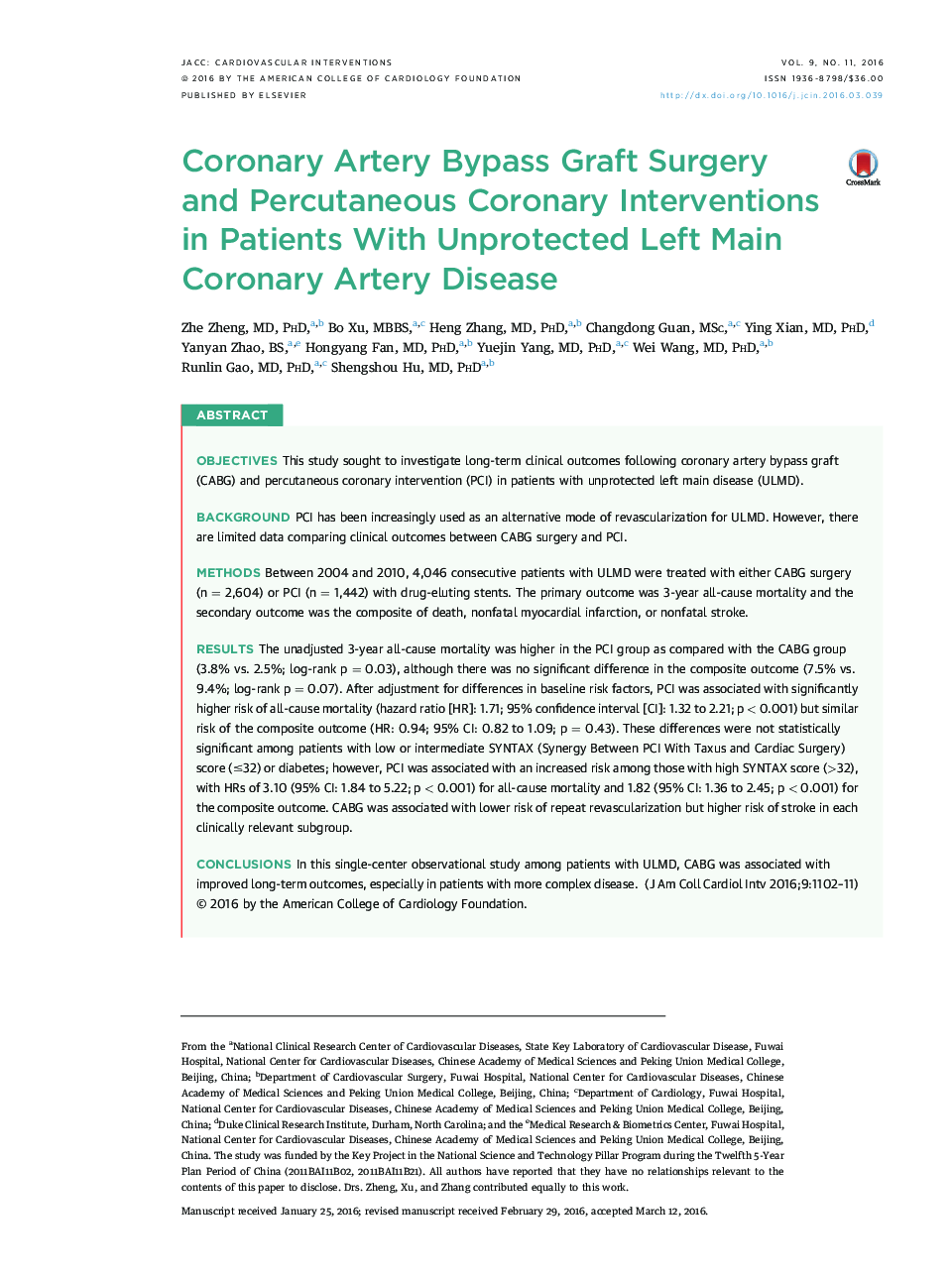| کد مقاله | کد نشریه | سال انتشار | مقاله انگلیسی | نسخه تمام متن |
|---|---|---|---|---|
| 2939485 | 1176990 | 2016 | 10 صفحه PDF | دانلود رایگان |
ObjectivesThis study sought to investigate long-term clinical outcomes following coronary artery bypass graft (CABG) and percutaneous coronary intervention (PCI) in patients with unprotected left main disease (ULMD).BackgroundPCI has been increasingly used as an alternative mode of revascularization for ULMD. However, there are limited data comparing clinical outcomes between CABG surgery and PCI.MethodsBetween 2004 and 2010, 4,046 consecutive patients with ULMD were treated with either CABG surgery (n = 2,604) or PCI (n = 1,442) with drug-eluting stents. The primary outcome was 3-year all-cause mortality and the secondary outcome was the composite of death, nonfatal myocardial infarction, or nonfatal stroke.ResultsThe unadjusted 3-year all-cause mortality was higher in the PCI group as compared with the CABG group (3.8% vs. 2.5%; log-rank p = 0.03), although there was no significant difference in the composite outcome (7.5% vs. 9.4%; log-rank p = 0.07). After adjustment for differences in baseline risk factors, PCI was associated with significantly higher risk of all-cause mortality (hazard ratio [HR]: 1.71; 95% confidence interval [CI]: 1.32 to 2.21; p < 0.001) but similar risk of the composite outcome (HR: 0.94; 95% CI: 0.82 to 1.09; p = 0.43). These differences were not statistically significant among patients with low or intermediate SYNTAX (Synergy Between PCI With Taxus and Cardiac Surgery) score (≤32) or diabetes; however, PCI was associated with an increased risk among those with high SYNTAX score (>32), with HRs of 3.10 (95% CI: 1.84 to 5.22; p < 0.001) for all-cause mortality and 1.82 (95% CI: 1.36 to 2.45; p < 0.001) for the composite outcome. CABG was associated with lower risk of repeat revascularization but higher risk of stroke in each clinically relevant subgroup.ConclusionsIn this single-center observational study among patients with ULMD, CABG was associated with improved long-term outcomes, especially in patients with more complex disease.
Journal: JACC: Cardiovascular Interventions - Volume 9, Issue 11, 13 June 2016, Pages 1102–1111
